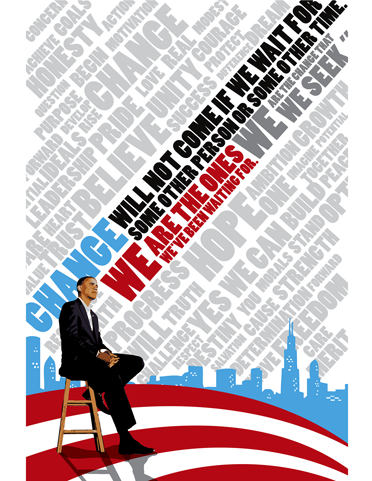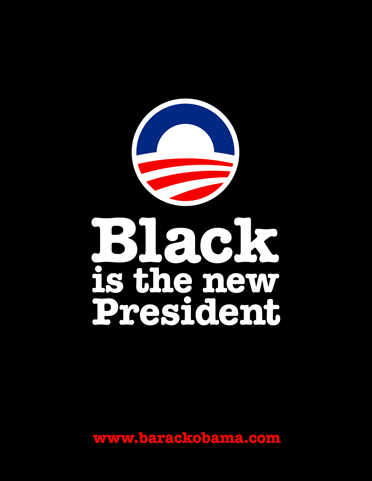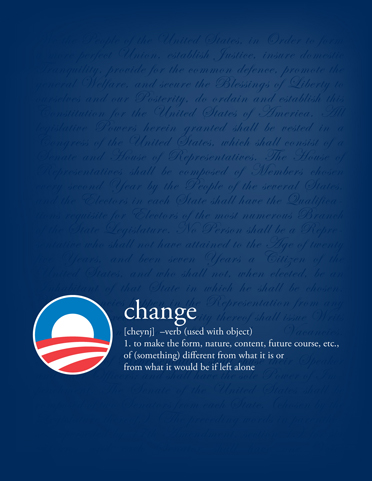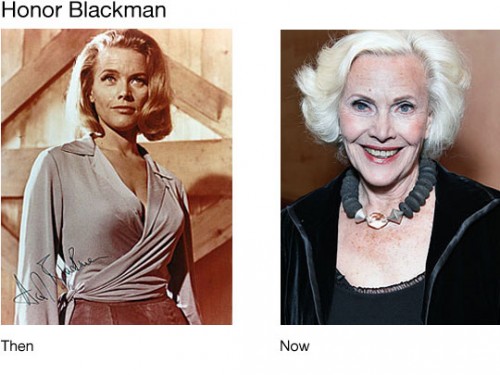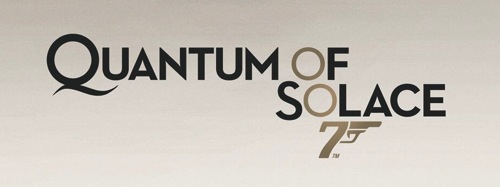
I saw the latest Jason Bourne James Bond film this weekend. Although not as much as Casino Royale, I thoroughly enjoyed Quantum of Solace, and I will be seeing it again. What follows are some lengthy thoughts and reactions.
Since any cinematic experience for me heavily involves the music, I’ll begin there. The title song, “Another Way to Die,” was written by Jack White and performed by White and Alicia Keys. While hailed as the first duet in Bond music history, the song is terrible. When I first heard the song several weeks ago, my first listen left me cringing and shuttering in disbelief. The song has grown on me significantly, though, and I actually enjoy listening to it. As a Bond song, however, it’s only slightly better than Madonna’s atrocious “Die Another Day.” White’s and Keys’s voices during the song don’t mesh well, and because they cover about the same vocal range with slightly different timbres, they seem to almost clash with dissonant cacophony. Instead of singing the chorus, they shout it; the orchestrations throughout are barren, and in the full version of the song, the intro meanders almost incoherently while stealing the same notes from “You Know My Name,” the title song from Casino Royale. Aspects of the song are catchy, hence my continual listening to it, but overall it fails.
Performance aside, though, the most damning aspect of the song is the lack of a usable, discernible melody to use with the film’s score. The best Bond title songs are those which can be weaved into and interpolated throughout the score proper. When this extended use happens, the song becomes more than a seemingly-disjointed, tacked-on prefix to the film; instead, it becomes a more intricately developed musical identity to the film. Composer David Arnold returns to write his fifth Bond score, his first being Tomorrow Never Dies in 1997. Throughout his tenure, he has had (at no fault of his own) mixed success with song melody utilization. For Tomorrow Never Dies, he wrote a classic Bond song titled “Surrender” (performed by k.d. lang) that was skillfully and successfully woven into the score. The song’s melody served as a propulsive base to several action cues throughout the score. The song, though, was replaced at the last minute by a sub-par song, titled “Tomorrow Never Dies” and performed by Sheryl Crow; “Surrender” survived, though, to appear during the end credits.
For The World Is Not Enough, Arnold wrote a song performed by Garbage. This song remained in the title sequence and, although not as often as “Surrender,” appears during the score.
Die Another Day was a musical amalgam of awfulness. Arnold had nothing to do with the song; instead, Madonna wrote and “performed” the song, which was nothing more than a cesspool of techno filth (and the words “die another day” were spoken a sure-to-make-anyone-say-enough-already sixteen times). Arnold, slowly descending into techno madness from his brilliantly modern-yet-classic-Bond score for Tomorrow Never Dies to his not-as-good-but-still-enjoyable score for The World Is Not Enough to his disappointing score for Die Another Day, seemed to attempt to out perform the song’s techno nonsense. Because of the overly techno feel and the absence of a strong melody, other than the “James Bond Theme,” to focus on, the score suffered immensely.
But for what Die Another Day lacked musically, Casino Royale more than made up. Arnold collaborated with Chris Cornell to write “You Know My Name.” The song was a fitting answer to the “re-invented” Bond, giving him a modern, harder edge song to fit his new rougher, edgier persona. Several melodies found themselves masterfully sprinkled in the score numerous times, and the way the song melodies intertwined with the classic four-note Bond chord progression made their appearance in the score better than the appearances from “Surrender” in the Tomorrow Never Dies score. The song served as more than just a song to accompany a beautiful title sequence; it served as a musical identity to the rest of the score and therefore the film as a whole.
The score for Quantum of Solace shares much of the same musical identity with Casino Royale except for a strong melodic line to create a cohesive whole. The action pieces, the reflective pieces, and the sleuthy pieces all are strong and enjoyable, but the score could have been stronger and more enjoyable with a unifying melody. While two cues on the soundtrack quote a “melody” from “Another Way to Die,” the quotation is relegated to a softer, sleuthy rendition, far from the outstanding usage of song melody in Tomorrow Never Dies and Casino Royale.
What I find most interesting about my reaction to the Quantum of Solace score is regardless of how much I love the theme, I don’t miss an outright, bombastic performance of the “James Bond Theme.” A statement of the theme like its abundant usage in Tomorrow Never Dies just doesn’t seem to fit with this new Bond. Is that good or bad, though. If you consider the Bond theme to be overused, then I suppose its absence, save for the several skillful additions of the Bond chord progression and the famous guitar line rendered for strings, is welcome and allows for other musical ideas to take shape and precedence. Like Casino Royale, though, the end credits feature a rousing rendition of the theme.
The title song, if not a part of the score, is, of course, the underpinning of the Bond title sequence. Since GoldenEye in 1995, Daniel Kleinman has created the stylized and themed title sequences. I was shocked to learn he had been replaced for Quantum of Solace but was cautiously optimistic that MK12, who designed the wonderful end title sequence and in-film motion graphics pieces for Stranger Than Fiction, was designing the sequence. Unfortunately, though, the Quantum of Solace title sequence was underwhelming. The sand and desert theme is an appropriate and obvious tie-in to the film’s climax location, and the women emerging from the sand was an interesting effect. Unlike previous title sequences, the names of the cast and crew didn’t just fade on, they had a cool animation to bring them on screen, and the best name animation was for Dame Judi Dench (her name appeared from circles animated identically to those of the gun barrel sequence). But the sequence as a whole meandered and wandered through its desert-like setting. The latter half seemed to throw a non-congruent slew of swiftly animating elements, from silhouettes of naked women to lines in the shape of a globe amongst some stars. Unlike the Kleinman sequences, this sequence seemed at a loss for a driving purpose and focus.
In addition to the title sequence, MK12 designed the in-film motion graphics associated with the Microsoft Surface touchscreen and the satellite-phone-call/villain-database-search wall in M’s office. These animations were superb and inspiring.
But enough with the music and the design. What about the rest of the film? Overall, the film was good, but not on the same level as Casino Royale. In Quantum of Solace, the film seemed like a never-ending chase sequence; there was a car chase, a foot chase, a boat chase, and an airplane chase. All this action is great, but there could have been some more exposition and character development (especially since the film shockingly came in under two hours). A few scenes (the ending comes to mind) could have benefited from a couple more minutes to explain the unanswered questions that arose from them. The action sequences, though, were great, and the stunts performed were top-notch. Several times I cringed at the intense physicality Daniel Craig put himself through for the role.
Although the scene didn’t involve intense action, one of the highlights of the film was the Tosca opera scene. Bond is doing some actual spying, trying to discover what he can about the mysterious group who wear “Q” lapel pins (fashioned in the same font as the film’s title). After Bond finds out what he needs to, he encounters the bad guy and the sound drops from the film. Instead of bullet firings, shouts, and destruction, we only hear the music from the opera sung over the scene of Bond fleeing resulting in an unexpected and incredible scene.
The main Bond girl Camille, played by Olga Kurylenko, was an interesting psychological counter to Bond. Both are seeking revenge, but what Bond learns from Camille helps shape him into the more familiar Bond character. Mathieu Amalric as Dominic Greene played a non-typical Bond villain. Instead of the supervillain intent on seeking world domination, Greene was a philanthropist-posing, dastardly-scheming corporate boss, and he played his character well. But for me, other than Craig as Bond, the best performance came from Dame Judi. She, apparently being the only authority figure in Bond’s life, was crisp, forceful, and yet funny. One of her best lines (and I’m paraphrasing, as I don’t remember the exact quotes): she, through her aide on the phone with Bond, asks about someone Bond was to investigate; he responds the guy was a “dead end”; M, in an outburst of surprise and fury, says, “that means he killed him!” The delivery of this line and several others made me laugh. When producers decided to reboot the series with Casino Royale, I’m very pleased they kept Dame Judi as M.
Also with the rebooted Bond came a more Jason-Bourne-like persona. While I’m sure this persona will get mixed reactions, it doesn’t bother me. Like Bond, Bourne is a spy; and now like Bourne, Bond deals in a more realistic, edgier world than the old Bond did. No invisible cars here. Thankfully.
Couple other notes: as with Casino Royale, I fail to comprehend why one of M’s aides couldn’t have been Moneypenny instead; I hope we see more of Felix Leiter in forthcoming films; the Goldfinger reference with Fields was outstanding; Mathis and the dumpster was disturbing; the gun barrel seemed tacked-on and lacked the sophistication of Kleinman’s Brosnan gun barrel sequences; and Universal Exports makes a Bond-geek-pleasing return.
And, as customary, the credits end with “James Bond Will Return.” I’ll be eagerly waiting. I just hope that Q, Moneypenny, Daniel Kleinman, and David Arnold as title song composer return, too.







